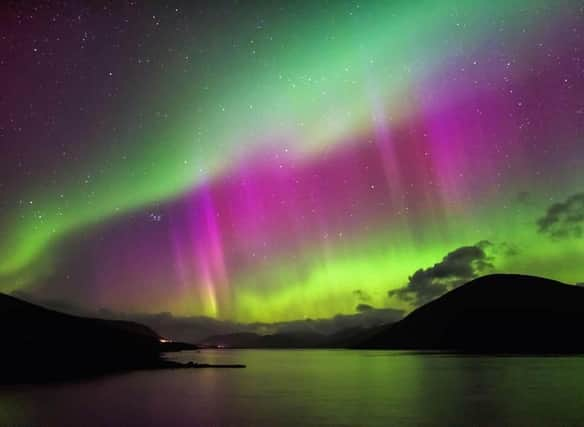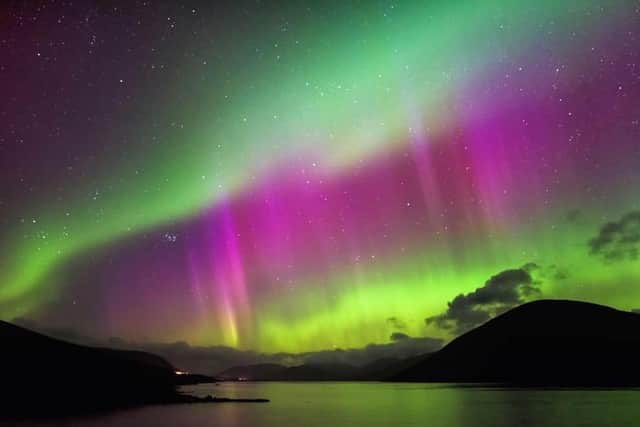Northern Lights Scotland 2024: How to improve your chances of seeing the aurora borealis - if the cloud stays away


On Friday, May 10, the Northern Lights illuminated the skies across much of Scotland - with clear skies meaning most of the country got a spectacular show.
A major tourist industry has become established in recent years, charging people desperate to experience the phenomenon large amounts for trips to vast and dark wildernesses in Iceland and Scandinavia.
Advertisement
Hide AdAdvertisement
Hide AdBut the truth is that Scotland is far north enough to offer a decent chance to see the aurora borealis, and has plenty of locations where the skies are dark enough for the lights to shine.
And the experts predict that there’s a good chance of seeing them again in the coming days and weeks.
The moving patterns of green, blue, purple and red are caused by solar storms on the surface of the sun, which create clouds of electrically charged particles that are forcefully expelled.


Some of these particles collide with the Earth, with some becoming caught in the planet’s magnetic field, where they are attracted to the north and south poles.
This collection of particles collide with atoms and molecules already present in the atmosphere, heating them up and causing them to glow – creating the Northern Lights.
The closer you are to the North Pole, the higher your chance of seeing them, with most of Scotland in the zone where they are – in theory – regularly visible.
And spring is one of the best times to catch a display, with long cold nights and (hopefully) clear skies providing the perfect conditions.
Aurora hunters may want to head out of the city, as light pollution can ruin the view, and face the northern horizon.
Advertisement
Hide AdAdvertisement
Hide AdA mobile phone camera is likely to see the Northern Lights when you can’t, but don’t make the mistake of continually staring at your phone screen - in order to see them with your own eyes you need to avoid any form of artificial light for around 25 minutes, then the colours will slowly start
Of course you need to be lucky, but a regular check of the Aurora Watch website, which measures the amount of solar activity each day, will let you know when it’s worth heading out to try your luck.
Read more:
Comments
Want to join the conversation? Please or to comment on this article.